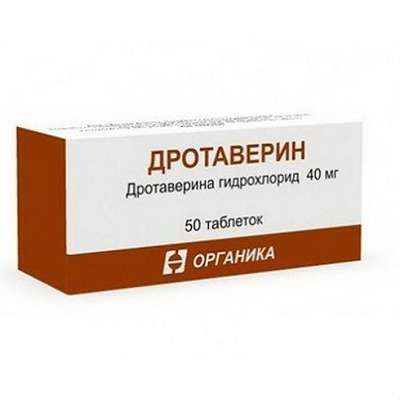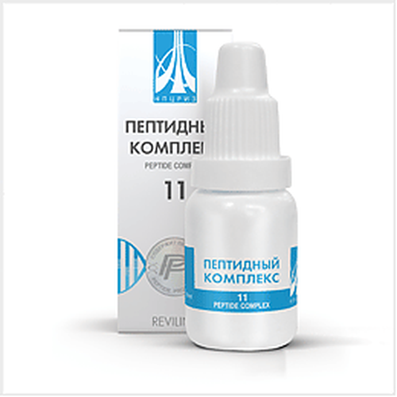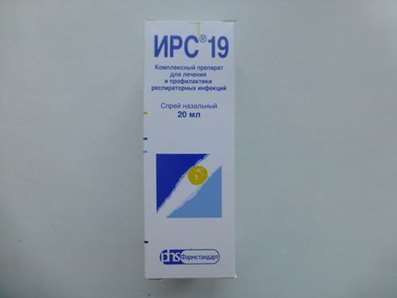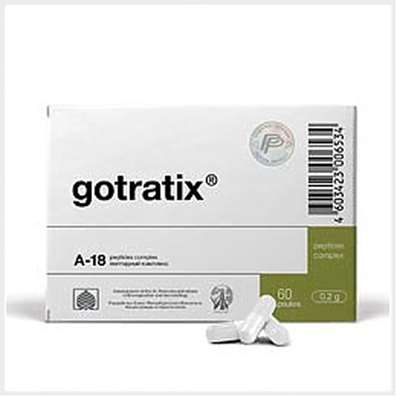Instruction for use: NeoCytotect
I want this, give me price
Dosage form: solution for infusion
Active substance: Immunoglobulin cytomegalovirus
ATX
J06BB09 human immunoglobulin antitsitomegalovirusny
Pharmacological group:
MIBP-globulin [Immunoglobulins]
The nosological classification (ICD-10)
B20.2 HIV disease with manifestations of cytomegalovirus disease: Cytomegalovirus infection in AIDS patients; CMV retinitis in patients with AIDS; CMV in AIDS patients; Cytomegalovirus retinitis in AIDS patients
B25 Cytomegalovirus: Generalized CMV infection in patients with AIDS; Cytomegalovirus infection in patients with impaired immunity; Cytomegalovirus infection; Cytomegalovirus infection in patients with habitual miscarriage Cytomegalovirus retinitis; Cytomegalovirus retinitis in AIDS patients; CMV; CMV in AIDS patients; CMV infection; CMV infection in the presence of immunodeficiency; CMV infection in cancer patients with immunosuppression; CMV-pneumonia; CMV retinitis in patients with weakened immunity; CMV retinitis in AIDS patients
D80 Immunodeficiencies with predominant antibody deficiency: Disease of cold antibodies; Agammaglobulinemia acquired; Agammaglobulinemia linked to the X chromosome; Agammaglobulinemia swiss; Secondary hypogammaglobulinemia; Hypogammaglobulinemia; Severe secondary hypogammaglobulinemia; Secondary antibody deficiency syndrome
D84.9 Unspecified Immunodeficiency: Pneumonia in immunodeficient states; Autoimmune disease; Autoimmune diseases; Severe immunodeficiency; immune deficiency; Immunodeficiency; immunodeficiency diseases; Immunodeficiency states due to surgery; Immunotherapy for cancer; Immunomodulation; Infections in patients with weakened immune systems; Correction of immune deficiency; Correction of immunodeficiencies; Correction of a weakened immune system; Correction of a weakened immunity in immunodeficient states; Violation of immunity; Violation of the immune status; Immune System Disorders; Primary immunodeficiency; Maintaining immunity; Lowering the body's defenses; Lowering the immunity; Lowering the immunity of colds and infectious diseases; The decrease of the immune status; Lowered resistance to infections; Lowered resistance to infections and colds; Lowered resistance; Immunosuppression; Predisposition to colds; acquired immune deficiencies; Radiation immunodeficiency; The development of immunodeficiency; Immune dysfunction syndrome; immunodeficiency syndrome; primary immunodeficiency syndrome; Reducing the body's defenses; Immunosuppression; Reduced immune defense; Reducing local immunity; Reducing the total body resistance; The decrease in cell-mediated immunity; Reduced resistance to infections in children; Reducing the body's resistance; Reduced resistance; reduced immunity; Status immunodeficiency; Stimulation of the processes of nonspecific immunity; Heavy selective secondary immunodeficiency; immunity Oppression; Primary immunodeficiency
T86 Dying and rejection of transplanted organs and tissues: Transplant disease vs. host; The rejection crisis in organ and tissue transplantation; The crisis of immunological incompatibility in organ transplantation; Incompatibility of tissues; Graft rejection; Graft rejection; Rejection reactions during organ transplantation; Rejection reactions during tissue transplantation; Graft versus host response; Rejection of transplant rejection; Graft-versus-host syndrome; Fabric incompatibility
Z29.1 Prophylactic immunotherapy: Vaccination against viral infections; donor Vaccination; Vaccination and revaccination; Vaccination of newborns; Vaccination against hepatitis B; Immunization; Correction of the immune status; Therapeutic and prophylactic immunization; Preventive immunization; Specific immunoprophylaxis; Stimulation of the processes of nonspecific immunit
Composition
Solution for infusion 1 ml
active substance:
Human plasma proteins 50 mg
of them:
IgG not less than 96%
IgA not more than 2 mg
The content of antibodies against CMV is not less than 100 E *
Auxiliary substances: glycine - 300 μmol; Water for injection - up to 1 ml
Distribution of subclasses of IgG:
IgG1 about 65%
IgG2 about 30%
IgG3 about 3%
IgG4 about 2%
* Unit of the reference preparation of the Paul Ehrlich Institute, Germany
Description of dosage form
Colorless or light yellow, transparent slightly opalescent liquid.
Pharmachologic effect
Mode of action - antiviral, immunomodulating.
Pharmacodynamics
Neocytotect is an Ig preparation that is made from a plasma of donors with a high antibody titer against the cytomegaly pathogen. The distribution of subclasses of IgG corresponds to the distribution in the plasma of healthy donors.
Pharmacokinetics
Bioavailability of human Ig against CMV infection with iv injection is 100%. The distribution between plasma and extravascular fluid occurs quickly enough, and in 3-5 days an equilibrium is achieved between the intravascular and extravascular space. T1 / 2 Neocytoteca is an average of 24 days. IgG and its complexes are utilized by the cells of the reticuloendothelial system.
Indication of the NeoCytotect
Prevention of CMV infection in patients with suppressed medications by the immune system, in particular after organ transplantation;
Prevention of the manifestation of the disease after CMV infection;
Therapy of CMV infection in immunocompromised patients, such as premature infants, newborns, as well as in patients with suppressed medications immunity or immunodeficiency caused by other causes (eg AIDS).
There are no age restrictions.
Contraindications
Hypersensitivity to any component of the drug;
Increased sensitivity to human Ig, especially in rare cases of a deficiency in the blood of IgA and the presence of antibodies against IgA.
Application in pregnancy and breastfeeding
The absence of risk of using this drug during pregnancy has not been studied in controlled clinical trials, therefore it should be used with caution in pregnancy and lactation, although the long experience of medical use of Ig does not allow expecting any harmful effect on the course of pregnancy, as well as on the fetus and the newborn. Ig injections are excreted with human milk and may facilitate the transfer of protective antibodies to newborns.
Side effects
Certain side effects can occur more often:
- at a high rate of administration;
- in patients with complete or partial immunodeficiency, both in the presence and absence of IgA deficiency;
- in patients receiving human Ig for the first time or in rare cases when switching to another Ig preparation, or if Ig treatment was performed for a long time.
With the introduction of the drug NeoCitotect possible side effects such as chills, headache, fever, nausea, vomiting, lowering blood pressure, allergic reactions, arthralgia and mild pain in the lower back.
In rare cases, as a result of Ig administration, a sharp decrease in blood pressure is possible, and in some cases - anaphylactic shock, even if the patient had no hypersensitivity during the previous administration.
With the introduction of normal human Ig, cases of the appearance of signs of aseptic meningitis and in rare cases - hemolytic anemia, hemolysis, transient skin reaction (rash or hyperemia), which completely disappeared after discontinuation of therapy.
In addition, there was an increase in serum creatinine and / or acute renal failure.
Single cases of thromboembolic reactions, such as myocardial infarction, stroke, pulmonary embolism and deep vein thrombosis, have been noted.
In the case of reactions that indicate intolerance of the drug, it is necessary either to reduce the rate of administration, or to stop the infusion until the symptoms disappear. The choice of appropriate measures to prevent the emergence of side effects depends on the type and severity of the side effect.
In the event of a negative impact on kidney function, a decision to discontinue Ig therapy should be weighed.
In case of shock, follow the current recommendations for antishock therapy.
The frequency of adverse events by WHO graduation is summarized in the table: very often (≥1 / 10); Often (≥1 / 100, but <1/10); Infrequently (≥1 / 1000, but <1/100); Rarely (≥1 / 10000, but <1/1000); Very rarely (<1/10000); It is not known (impossibility of evaluation according to available data).
| Classification of lesions of the body systems according to the medical dictionary of normative and legal activity - MedDRA | Undesirable reactions | Frequency |
| Violations of the blood and lymphatic system | Reversible hemolytic anemia, hemolysis | Unknown |
| Disturbances from the nervous system | Headache | Infrequently |
| Disorders from the digestive tract | Nausea, vomiting | Infrequently |
| Disorders of the kidneys and genitourinary tract | Increased level of serum creatinine and / or acute renal failure | Unknown |
| Disturbances from the skin and subcutaneous tissues | Transient Skin Reactions | Rarely |
| Disturbances from musculoskeletal and connective tissue | Arthralgia, mild pain in the lower back | Infrequently |
| Infectious and parasitic diseases | Reversible aseptic meningitis | Unknown |
| Vascular diseases | Low blood pressure, thromboembolic reactions such as myocardial infarction, stroke, pulmonary embolism and deep vein thrombosis | Infrequently / very rarely |
| General disorders and disorders at the site of administration | Chills, fever | Infrequently |
| Immune system disorders Classification of lesions of the body systems according to the medical dictionary of normative and legal activity - MedDRA | Allergic reactions | Infrequently |
| Hypersensitivity reactions with sudden drop in blood pressure and in some cases - anaphylactic shock, even if the patient had no hypersensitivity in the previous administration | Rarely |
Interaction
Live attenuated viral vaccines: Ig administration can adversely affect, at least 6 weeks to 3 months, the effect of live attenuated vaccines against viral diseases such as measles, rubella, mumps and chicken pox. Vaccination with these drugs should be carried out no earlier than after 3 months after the introduction of Neocytotec. In the case of measles vaccination, this interval can be increased to 1 year. In this connection, patients who received NeoCytotect and who need to be vaccinated against measles should first be examined for the presence of specific antibodies against measles.
Laboratory tests: after Ig administration, a temporary increase in the titer of various passively introduced antibodies is possible, which can lead to false positive results in serological testing.
Passively introduced antibodies against erythrocyte antigens (eg A, B, D) can affect individual serological parameters, such as alloantibodies to erythrocytes (eg Coombs reaction), the number of reticulocytes and haptoglobin.
Dosing and Administration
IV (infuzionno).
Prevention of cytomegalovirus infection in patients with depressed immunity
The drug is administered in a single dose of 1 ml per kg of body weight. In CMV-seronegative patients, organ transplantation should be initiated on the day of transplantation, and in bone marrow transplantation - on the day preceding transplantation. In CMV-seropositive patients, prevention should begin 10 days before transplantation. In all these groups, patients should receive at least 6 single-dose doses at intervals of 2-3 weeks.
Therapy of cytomegalovirus infection
A single dose of 1 ml per kg of body weight every 48 hours until the disappearance of clinical symptoms.
Method of administration
Before the introduction of NeoCytotect need to visually check. The solution should be clear or slightly opalescent. An opaque or precipitating solution should not be used.
Before the introduction of the drug should be brought to room temperature.
Neocytotect is intended for intravenous infusion.
The initial infusion rate should be 0.08 ml / kg body weight / h, after 10 min with good drug tolerance, the rate can be gradually increased to a maximum of 0.8 ml / kg body weight / h and stored until the end of the injection.
The preparation is not subject to preliminary dilution.
Neocytotect cannot be confused with other drugs.
The open vial should be used immediately. Because of the risk of bacterial contamination, the unused solution must be discarded.
Overdose
Overdose of the drug in patients at risk, especially in elderly people, as well as in patients with impaired renal function, may lead to an increase in blood viscosity.
Precautionary measures
It is necessary to strictly observe the recommended rate of administration, tk. With its increase there is a tendency to an increase in side effects. Patients should be fully tested and carefully monitored to check for any symptoms during the entire infusion time.
In rare cases, after the introduction of Ig, it is possible to lower blood pressure and, in isolated cases, anaphylactic shock, even if the patient had no hypersensitivity during the previous administration.
True hypersensitivity reactions are extremely rare, in cases in which there is no IgA in the blood and antibodies to IgA are formed.
In most cases, possible complications can be avoided if:
- make sure that the patient does not have allergic reactions to very slow administration of Ig (0.08 ml / kg / h);
- carefully observe during the entire injection of the drug for the patient and monitor the appearance of signs of undesirable effects.
Especially it is necessary to observe especially during the entire infusion and, at least for 1 hour after its end, for patients who have never before received human Ig or received other Ig or which Ig were administered very long ago. All other patients should be monitored for at least 30 minutes after the end of the injection.
There is a possible relationship between intravenous Ig injection and thromboembolic events, such as myocardial infarction, stroke, pulmonary embolism, and deep vein thrombosis. It is suggested that in patients at risk, the administration of a large dose of Ig leads to a relative increase in blood viscosity.
It is recommended to carefully prescribe and administer Ig to the following patients: senile, with high blood pressure, diabetes mellitus, vascular disease or history of thrombosis in the anamnesis, hereditary or acquired thrombophilic disorders that have been immobile for a long time, with severe hypovolemia, as well as with chronic diseases , At which the viscosity of the blood increases.
When using medicines from human blood or plasma, the risk of transmission of infectious agents cannot be completely ruled out. This also applies to pathogens that are still unknown in nature. To reduce the risk of transmission of pathogens, donor criteria are selected according to strict criteria, donor plasma is tested and selected and the pool of plasma is monitored.
The manufacturing process includes stages for the removal and / or inactivation of pathogens.
For the production of Neocytotec, only plasma of healthy donors is used, in which no antibodies to HIV types 1 and 2, hepatitis C virus and hepatitis B surface antigen, as well as liver enzymes (transaminases) activity do not exceed the normal limit value. In addition to testing the plasma of individual donors, miniipules are first tested (polymerase chain reaction (PCR) testing for HIV, hepatitis A, B and C viruses, paravovirus B19), and then a production pool of plasma processed for Neocytotect (repeated testing for antibodies to HIV Types 1 and 2, hepatitis B and C viruses, as well as PCR for HIV, hepatitis B and C viruses). In production, a pool of plasma is used only with negative test results.
Neocytotect is made by fractionating ethanol in the cold. For inactivation and removal of possible viruses, treatment with tri-n-butyl phosphate, tween 80, octanoic acid and filtration is carried out. Additionally, the nanofiltration procedure is carried out.
Release form
Solution for infusion. For 10 or 50 ml of the drug in bottles of colorless glass, sealed with a cork made of bromobutyl rubber with an aluminum cap, 1 bottle per carton.
Manufacturer
Biotest Pharma GmbH.
Landsteiner Straße, 5, D-63303 Dreieich, Germany.
Biotest Pharma GmbH.
Landsteinerstrasse, 5, D-63303 Dreieich, Germany.
Conditions of supply of pharmacies
On prescription.
Storage conditions of the drug NeoCytotect
In the dark place at a temperature of 2-8 ° C (do not freeze).
Keep out of the reach of children.
Shelf life of the drug NeoCytotect
3 years.
Do not use after the expiry date printed on the package.

 Cart
Cart





